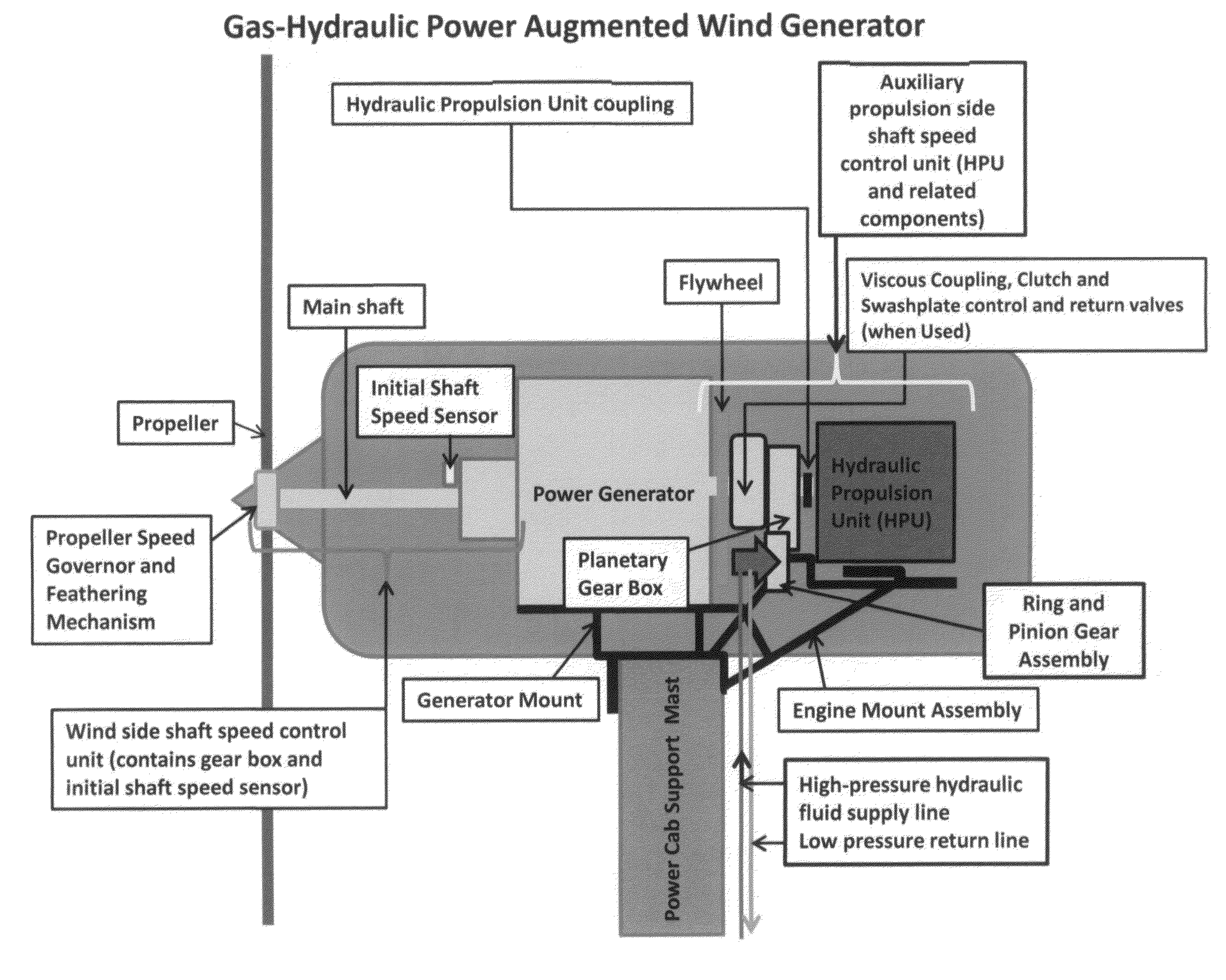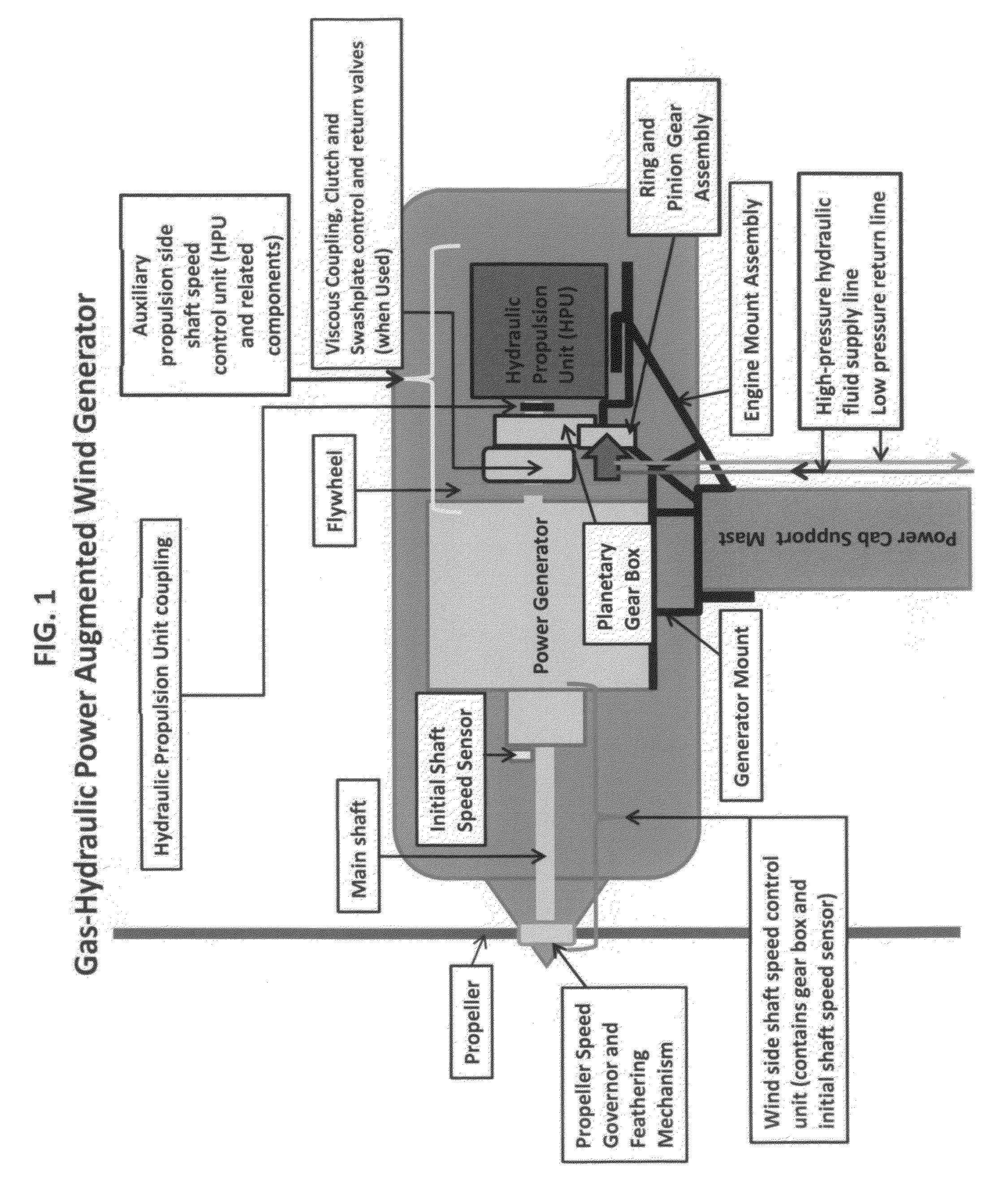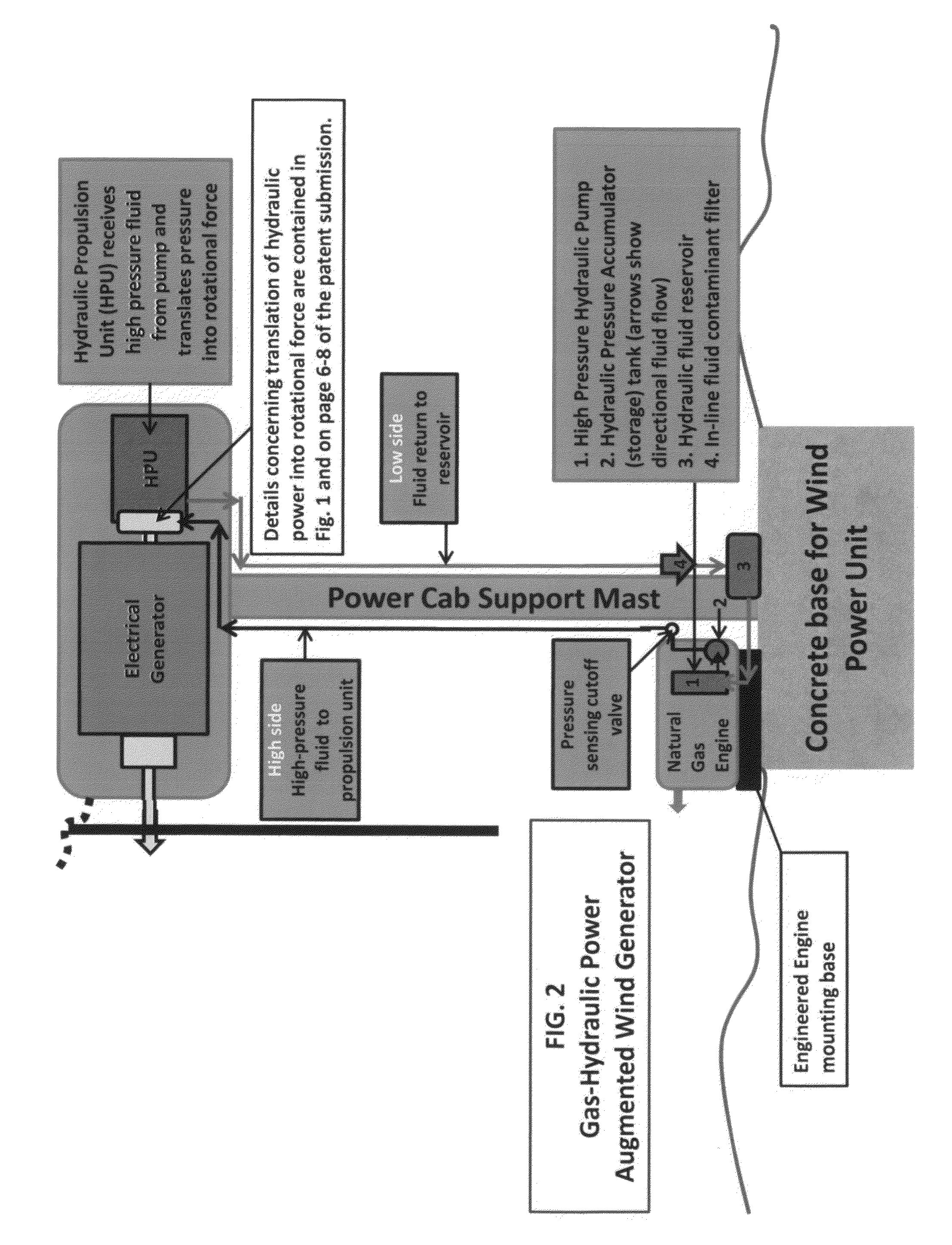Wind powered electrical generator-hydraulic-natural gas power augmented
a technology of natural gas and wind power, applied in the direction of wind power, electric generator control, control system, etc., can solve the problems of reducing the service life of critical components, achieving consistent wind velocity and direction, etc., and achieves the effect of reducing cooling requirements, reducing drag or resistance, and efficient application
- Summary
- Abstract
- Description
- Claims
- Application Information
AI Technical Summary
Benefits of technology
Problems solved by technology
Method used
Image
Examples
Embodiment Construction
[0054]Design will incorporate an efficient natural gas powered engine, driving a hydraulic power unit mounted behind the power generation assembly (on the aft or non-wind end of the power cab) as an alternate locomotive source to turn the wind-powered electrical generator. The entire auxiliary propulsion system would consist of: 1) a natural gas engine; 2) a high pressure hydraulic pump driven by the natural gas powered engine; 3) a pressure accumulation (storage) tank with associated check and release valves calibrated to the pressure range required to power the propulsion unit; 4) a particulate filter to remove foreign matter from the fluid as it flows through the closed-loop hydraulic system to the reservoir for use by the hydraulic pump; 5) a control panel linked to the sensors mounted on the main generator shaft, and; 6) a hydraulic propulsion system connected to the hydraulic pump via high-pressure lines (hydraulic fluid supply and return). Items 1 through 4 would be mounted a...
PUM
 Login to View More
Login to View More Abstract
Description
Claims
Application Information
 Login to View More
Login to View More - R&D
- Intellectual Property
- Life Sciences
- Materials
- Tech Scout
- Unparalleled Data Quality
- Higher Quality Content
- 60% Fewer Hallucinations
Browse by: Latest US Patents, China's latest patents, Technical Efficacy Thesaurus, Application Domain, Technology Topic, Popular Technical Reports.
© 2025 PatSnap. All rights reserved.Legal|Privacy policy|Modern Slavery Act Transparency Statement|Sitemap|About US| Contact US: help@patsnap.com



